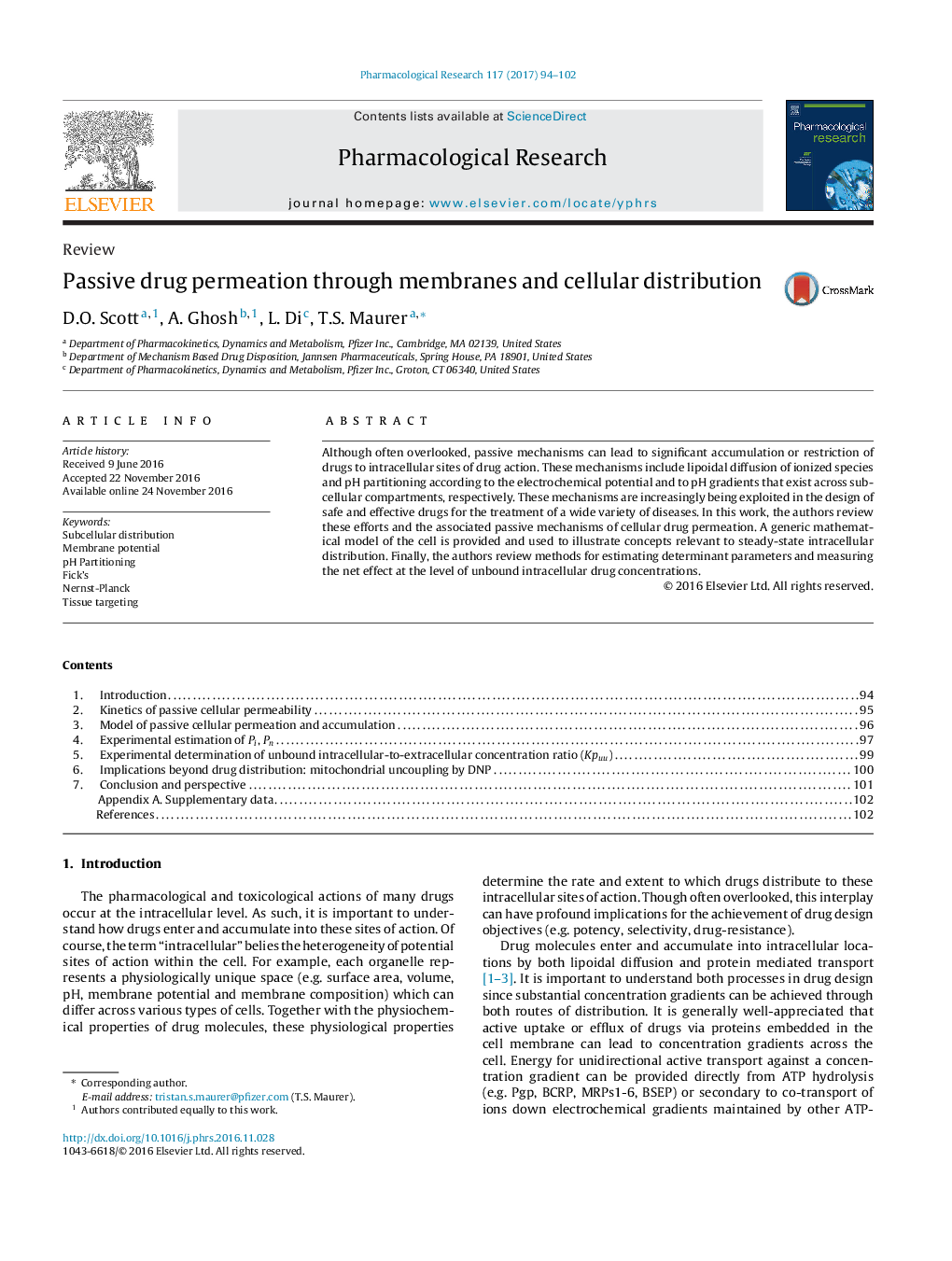| Article ID | Journal | Published Year | Pages | File Type |
|---|---|---|---|---|
| 5557415 | Pharmacological Research | 2017 | 9 Pages |
Although often overlooked, passive mechanisms can lead to significant accumulation or restriction of drugs to intracellular sites of drug action. These mechanisms include lipoidal diffusion of ionized species and pH partitioning according to the electrochemical potential and to pH gradients that exist across subcellular compartments, respectively. These mechanisms are increasingly being exploited in the design of safe and effective drugs for the treatment of a wide variety of diseases. In this work, the authors review these efforts and the associated passive mechanisms of cellular drug permeation. A generic mathematical model of the cell is provided and used to illustrate concepts relevant to steady-state intracellular distribution. Finally, the authors review methods for estimating determinant parameters and measuring the net effect at the level of unbound intracellular drug concentrations.
Graphical abstractDownload high-res image (114KB)Download full-size image
